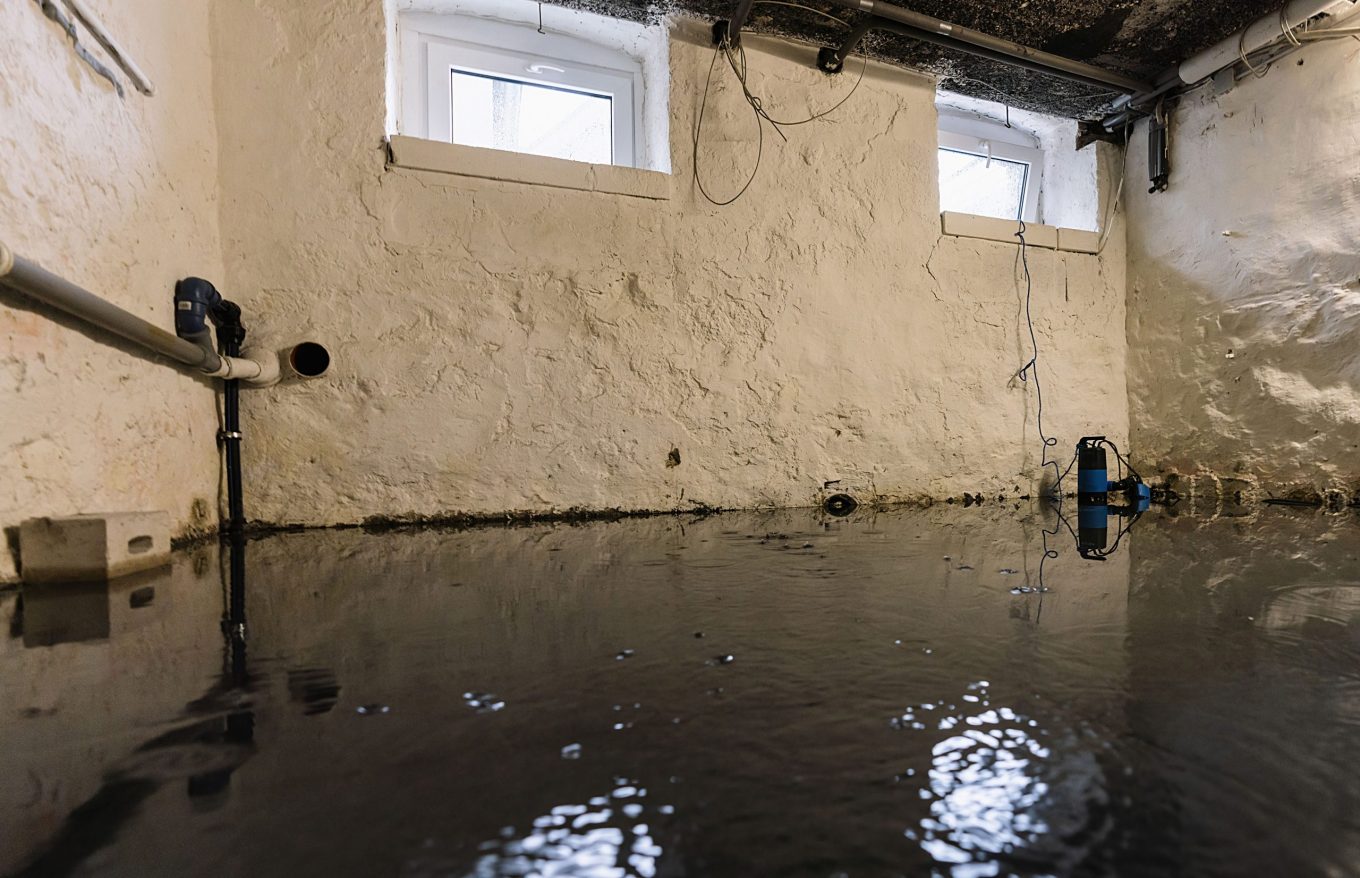It may seem counterintuitive for your basement to be wet during the frozen winter months. However, snow is simply another form of precipitation. As a result, it can still contribute to moisture issues in your basement. The reason for your wet basement conditions is that snow accumulation has the same effect on your outer foundation walls as heavy spring rains; we look at 8 possibilities for your wet basement problems.
Any way you look at it, a wet basement must be addressed.
The heat of your basement permeates through to the outside foundation wall, melting the snow and thawing the ground moisture. Hydrostatic pressure, which is the force exerted by a fluid due to gravity, pushes this moisture downward. As a result, it often travels up through the floor of your basement. Waterproofing your interior or exterior foundation is likely the best solution.
Contact your BEST London Ontario basement waterproofing professional. Best Plumbing and Drainage Contractors are professional wet basement contractors with integrity. Since 1986, we have proudly served London and its surrounding areas. Moreover, our years of experience ensure that we provide reliable and effective solutions for all your plumbing and drainage needs. We have decades of experience figuring out the source of your basement moisture.
See our satisfied client reviews.
8 Wet Basement Possibilities Best Plumbing and Drainage Contractors Look at:
- Cracks or an older and failing foundation.
- An improperly directed or a too-short eavestrough downspout.3
- Clogged eavestrough gutters.
- Unmaintained window wells.
- A clogged underground downspout extension.
- Improper grading of your yard or neighbourhood topography.
- Your home is built in a natural high-water table area.
- A lack of green space in the neighbourhood.
1. Cracks in or having an older and failing foundation.
Over time, especially with older foundations built before moisture barrier requirements, water may seep into your basement. If your foundation is porous, even tiny holes in the concrete will allow water to pass through to the interior foundation wall.
2. An improperly directed or a too-short eavestrough downspout.
These concerns will leave the water running back toward or pooling near your home’s foundation. The elbow is often where debris collects, and if the extension below the elbow doesn’t fit well, the parts will force apart with the excess weight at the elbow clog.
3. Clogged eavestrough gutters.
Uncleaned gutters can become heavy with water, damaging and bending the eavestroughs and overflowing against the wall of your house. If the eaves remain clogged, the water will freeze during the winter. Then, on warm days, it runs straight down to the foundation level. Consequently, this can lead to potential damage to your home’s foundation.
4. Unmaintained window wells.
Leaves must be cleaned from window wells, and the drain must remain clear. Most window wells are cemented with a lower drain. If your drain is clogged, you must scoop the water out by hand or with a shop vac and call a drainage expert to unclog the drain. Standing water will quickly rot the window frame.
5. A clogged underground downspout extension.
You’ve likely seen these downspout extensions that disappear directly into a pipe in the ground. And they are often the cause of basement leaks. If clogged, uninsulated drains will freeze during the winter. As a result, the freeze expansion can burst the pipe against your house’s wall. Furthermore, these drains require more maintenance than above-ground downspouts.
6. Improper grading of your yard or neighbourhood topography.
Wet basements or improper drainage issues are not just older house problems. It also matters where, in the landscape, your home is built or situated in the neighbourhood.
Is the house at the bottom of a hill, or has the neighbourhood regrading put your house directly in the path of storm runoff?
Previous owners of your house may have unknowingly built up the yard forcing rainwater to pool against the walls of your house.
7. Your home is built in a naturally high water table area.
The groundwater table is something few people consider. However, in areas close to natural water features like our Great Lakes, this can unknowingly set you up for water problems in your basement. Therefore, it’s crucial to be aware of its potential impact. Drains and pumps are necessary to move the water away from your house.
8. A lack of green space that would typically accept precipitation run-off.
A lack of green space that would normally accept precipitation run-off is a disaster for your home. A sump pump (a must-have in most tight neighbourhoods with concrete, black top, and paving-stone-heavy landscapes) must be properly situated and graded toward a municipal drain. Inexperienced general contractors may not concern themselves with ensuring your sump pump drainage is correctly located for the neighbourhood. We have years of experience with proper sump pump installation. Always have your sump pump checked before the winter season. Doing so will help ensure it functions properly and prevent potential issues during the colder months.
We will always provide the most cost effective and professional solution to your drainage problems.
This post was written by Allan
November 7, 2022
Back to Blogs

